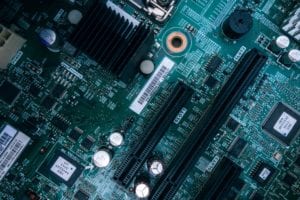 We live in a fast-paced, technology-driven society where data usage is increasing on a daily basis. Has it ever crossed your mind how much electric energy is consumed by people using their computers to send emails, make searches on Google, join web-based meetings and save photos from a cell phone to the iCloud?
We live in a fast-paced, technology-driven society where data usage is increasing on a daily basis. Has it ever crossed your mind how much electric energy is consumed by people using their computers to send emails, make searches on Google, join web-based meetings and save photos from a cell phone to the iCloud?
Sakhrat Khizroev, a professor at the College of Engineering & Computing, is exploring the capabilities of quantum physics to potentially revolutionize the computing industry. Through a $450,000 grant from the Air Force Office of Scientific Research (AFOSR) awarded to FIU, Khizroev, an expert in electrical engineering, computer engineering and physics, is creating an energy-efficient computer using spintronics technology to create extremely fast computers. This could substantially reduce amounts of energy consumption by electronic devices, thus avoiding an increase in ecological problems. Spintronics refers to the field of science and technology in which the spin and charge of an electron are used to enable energy-efficient information processing.
The semiconductor industry is behind the design and fabrication of semiconductor devices, which are used extensively in computer circuits. In this industry, only the charge of an electron is used to produce energy. The industry has been advancing for more than half a century according to Moore’s Law. According to this law, the number of transistors per square inch on silicon chips has doubled every year. However, this trend is coming to an end because of the charge leakage and high energy consumption as the transistor key featured is reduced in the sub-10-nanometer range.

Today, computer devices supporting the Internet alone are responsible for almost two percent of all the electric energy use.
“The carbon footprint of the Internet is significant and expected to grow rapidly during the next several years,” said Khizroev. “Using spintronic devices will not only give us a much more powerful Internet, but will also help overcome the problem of ecological waste.”
The usage of energy because of the Internet correlates with ecological problems such as an increase in global temperature.
Khizroev and his doctoral student, Brayan Navarrete, propose to use quantum physics, a branch in physics describing nature at the smallest scales of energy levels, and spintronics technology to overcome the fundamental problem. The idea is to control and manipulate the spin of the individual electrons because theoretically, the spin currents produce no heating, which would be the solution to energy efficiency.
Khizroev’s research involves building an entire computer of tiny magnetic nanoparticles, as small as two nanometers in diameter. To better understand how small a nanometer is, a single strand of human hair ranges from 80,000 to 100,000 nanometers in diameter, according to the National Nanotechnology Initiative.
“This project is a stepping stone toward quantum computing, which is the holy grail of information processing,” said Khizroev. “Quantum physics will define the future of computing. We are excited to be at the forefront of this cutting-edge research.”
 With the implementation of spintronics-based quantum devices, Khizroev expects computers to change in many ways and overcome fundamental problems of the modern Internet.
With the implementation of spintronics-based quantum devices, Khizroev expects computers to change in many ways and overcome fundamental problems of the modern Internet.
“The entire meaning of computing devices will change,” said Khizroev. “Computers and smartphones will become much smarter by having more processing power and performance and will use less battery power.”
Khizroev also anticipates computers will be smaller in size and consume barely any electric energy, which would avoid the overheating of computers. This is very common when charging an electronic device.
Spintronics technology is already used in magnetic disk drives to read information; however, more of it will be available in the information processing industry. FIU was awarded with the AFOSR grant in October 2018 and the grant is for three years.






